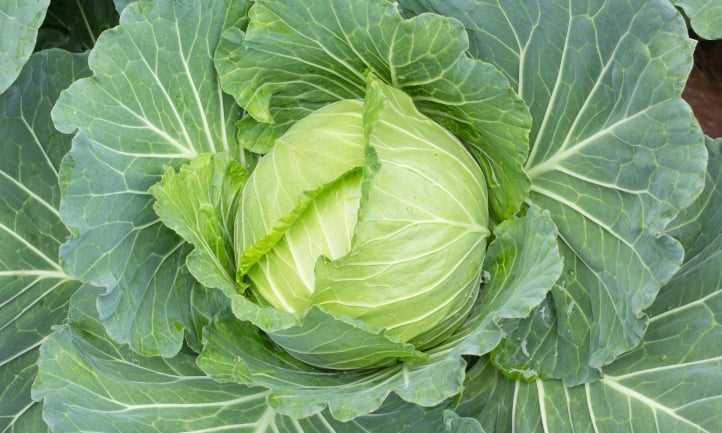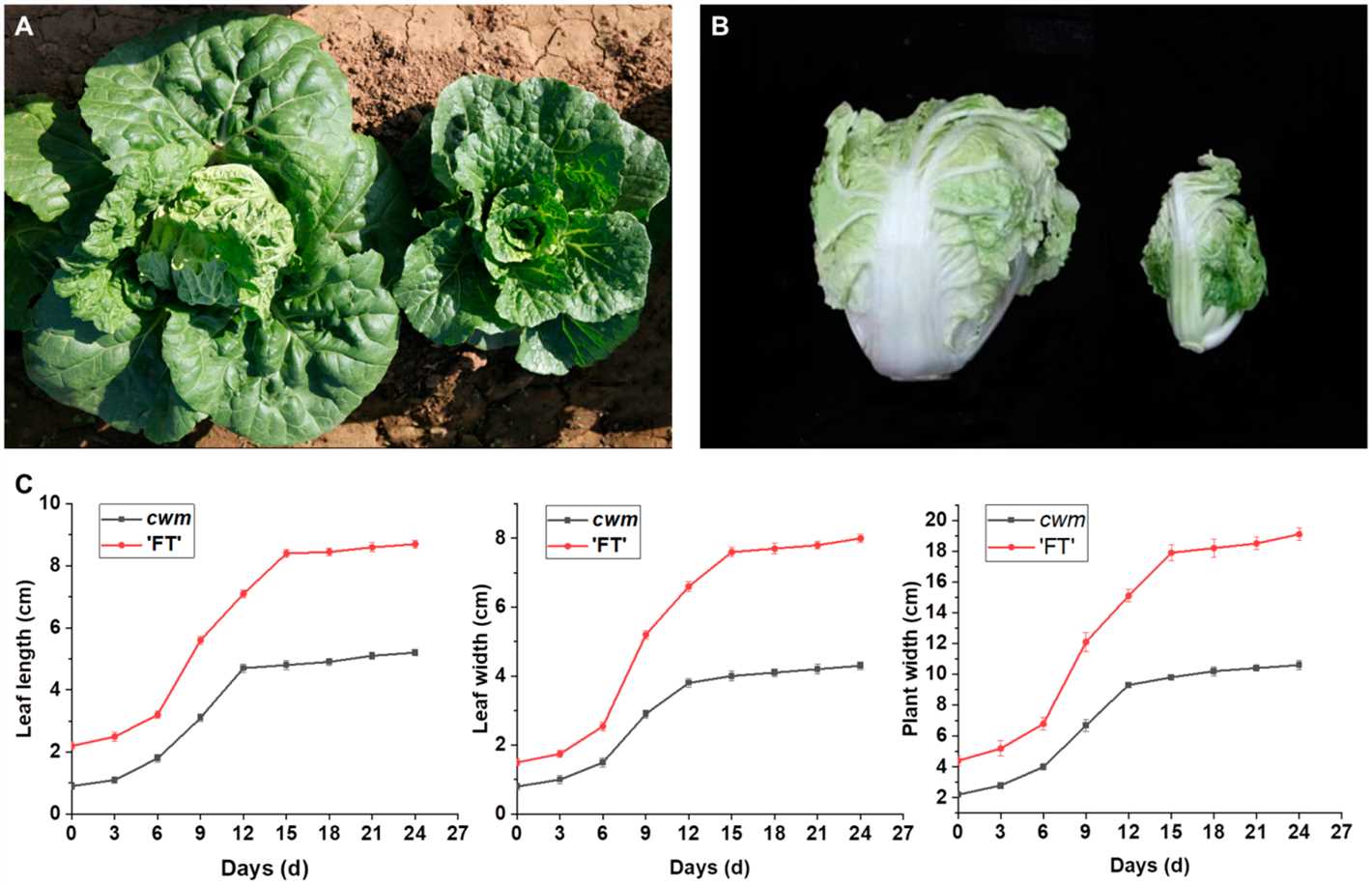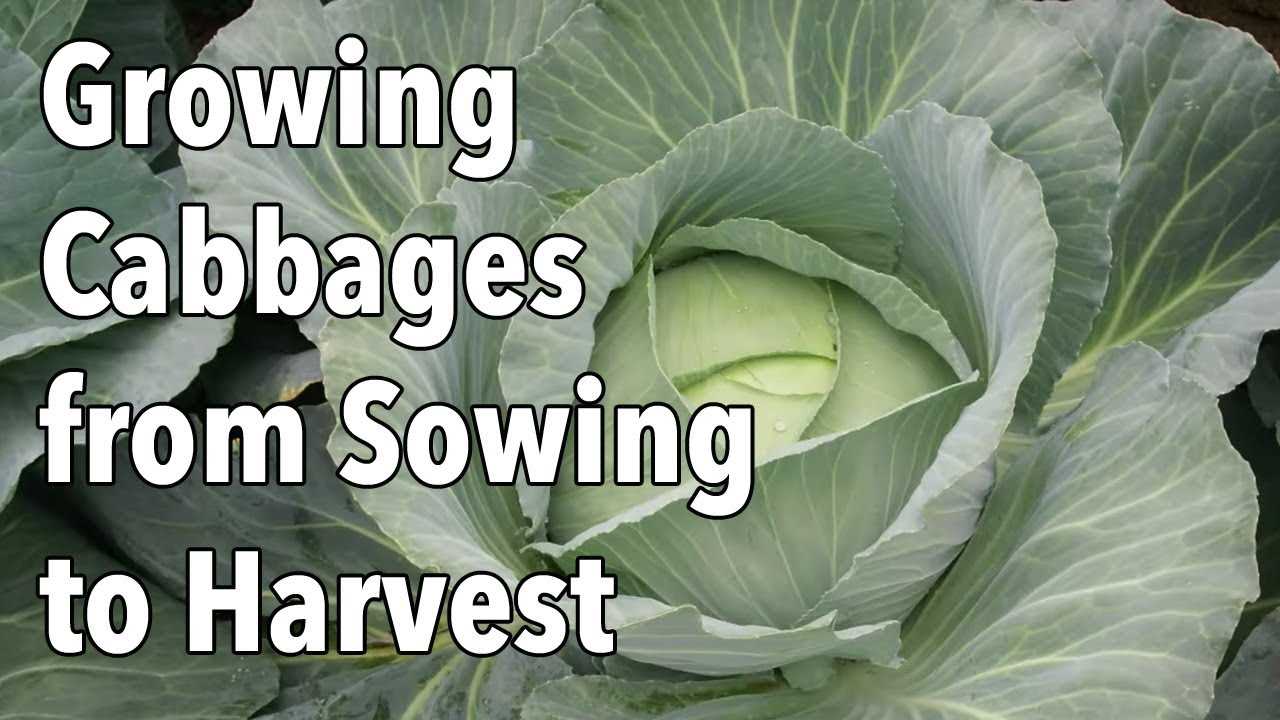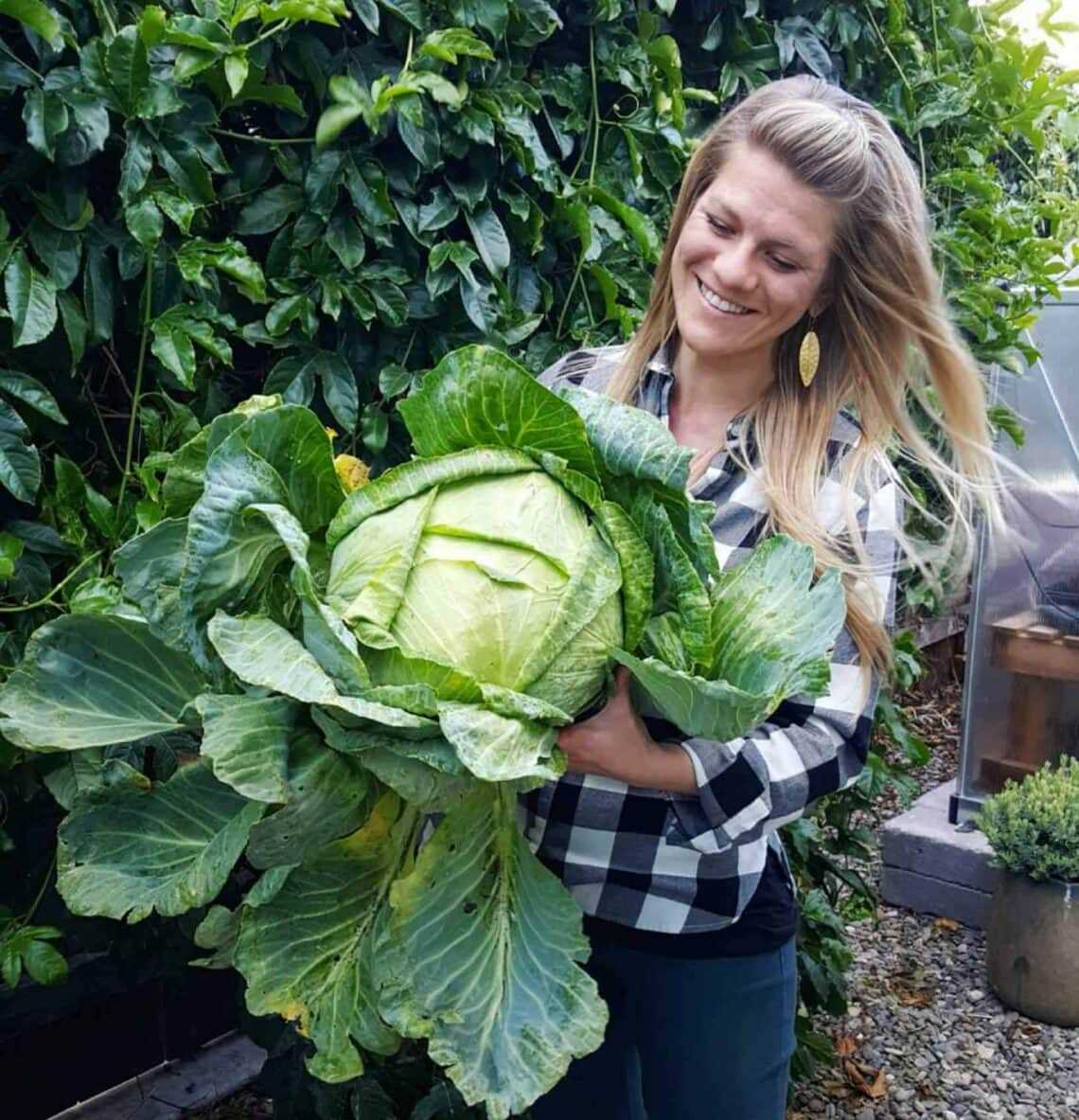- Should You Remove Lower Leaves of Cabbage?
- Advantages of Removing Lower Leaves
- Disadvantages of Removing Lower Leaves
- Guidelines for Removing Lower Leaves
- Tips to Increase Head Size
- Benefits of Removing Lower Leaves
- Improved Air Circulation
- Cons of Removing Lower Leaves
- Nutrient Loss
- When to Remove Lower Leaves
- Growth Stage
- Seedling Stage
- Vegetative Stage
- Head Formation Stage
- How to Remove Lower Leaves
- Proper Technique
- “Question-Answer”
- Should I remove lower leaves of cabbage?
- When is the best time to remove lower leaves of cabbage?
- Why should I remove lower leaves of cabbage?
- Can I remove all the leaves of cabbage?
- Will removing lower leaves of cabbage affect its growth?
- Can I remove lower leaves of cabbage when the head has already formed?
- “Video” Three reasons why I trim cabbage leaves/South African YouTuber
Cabbage is a popular vegetable known for its versatility and nutritional benefits. Whether you enjoy it raw in salads or cooked as a side dish, cabbage is a staple in many culinary traditions. If you’re a gardener, you may have wondered if removing the lower leaves of your cabbage plant can help increase the size of the head.
There is some debate among gardeners and experts about whether or not removing lower leaves actually benefits the head size of cabbage. Some believe that removing the lower leaves allows the plant to put more energy into growing the head, while others argue that the leaves provide essential nutrients and protection for the plant.
One thing to consider is that cabbage plants need a certain number of leaves to carry out photosynthesis, the process by which they convert sunlight into energy. Removing too many leaves can potentially limit the plant’s ability to produce and store energy. On the other hand, overcrowded leaves can lead to poor air circulation and increased risk of disease.
Ultimately, the decision to remove lower leaves of cabbage plants depends on the specific needs and conditions of your garden. It’s important to strike a balance between providing enough leaves for photosynthesis and maintaining good air circulation. Experimentation and observation are key to finding the best approach for your particular garden.
Should You Remove Lower Leaves of Cabbage?
When growing cabbage, one common question that arises is whether or not to remove the lower leaves. While there are differing opinions on this matter, there are a few key factors to consider when making the decision.
Advantages of Removing Lower Leaves
- Promotes head growth: Removing lower leaves allows more energy to be directed towards head growth. By eliminating these leaves, the plant can focus its resources on developing a larger, more compact head.
- Boosts air circulation: Removing lower leaves helps improve air circulation around the plant. This can reduce the risk of fungal diseases by minimizing moisture buildup and allowing the plant to dry more quickly after watering or rain.
- Controls pests: Lower leaves often attract pests like slugs and snails. By removing them, you can reduce the likelihood of a pest infestation on your cabbage plants.
Disadvantages of Removing Lower Leaves

- Increased susceptibility to sunburn: Removing too many lower leaves can expose the cabbage head to direct sunlight, potentially leading to sunburn. This can cause the outer leaves to turn brown and affect the overall quality of the cabbage.
- Reduced protection from environmental stress: Lower leaves can provide protection to the cabbage head from extreme temperatures and harsh weather conditions. Removing them may make the plant more vulnerable to these stressors.
Guidelines for Removing Lower Leaves
If you decide to remove lower leaves from your cabbage plants, it’s important to follow these guidelines:
- Start removing leaves when the cabbage head is about the size of a tennis ball.
- Only remove the leaves that are yellowing, damaged, or blocking airflow.
- Leave at least three to four healthy, green leaves on the plant to provide adequate protection and energy production.
- Monitor the plant closely after removing lower leaves to ensure the head is not exposed to excessive sunlight or other environmental stressors.
In conclusion, whether or not to remove lower leaves of cabbage is ultimately a personal choice. Consider the advantages and disadvantages mentioned above, and make a decision based on the specific needs of your cabbage plants. Proper care and monitoring will help ensure the best possible growth and head size for your crop.
Tips to Increase Head Size
- Plant in well-drained soil: Cabbage prefers soil that is well-drained and fertile. Before planting, amend the soil with organic matter such as compost or aged manure to improve drainage and provide nutrients for the plants.
- Provide adequate spacing: Cabbage plants need enough space to grow and develop fully. Plant them at least 18 to 24 inches apart to allow air circulation and prevent overcrowding. This will help the heads to reach their maximum size.
- Ensure proper nutrient supply: Cabbage is a heavy feeder and requires a steady supply of nutrients to grow well. Fertilize the plants regularly with a balanced fertilizer or apply a slow-release fertilizer at the time of planting. This will help promote healthy growth and increase head size.
- Control pests and diseases: Pests and diseases can hinder the growth of cabbage plants and reduce head size. Monitor your plants regularly and take appropriate measures to control pests such as aphids, cabbage worms, and snails. Preventive measures like crop rotation and good hygiene practices can also help reduce the risk of diseases.
- Water consistently: Cabbage plants require consistent moisture to grow and develop properly. Water them regularly, especially during dry periods, to keep the soil evenly moist. Avoid overwatering, as excessive moisture can lead to diseases and rot.
- Remove lower leaves: Removing the lower leaves of cabbage plants can help increase head size. As the plant grows, the lower leaves can become damaged or shaded, restricting the growth of the inner leaves and head. Gently remove these yellowed or damaged leaves to allow better airflow and sunlight penetration to the center of the plant.
- Harvest at the right time: Harvesting cabbage at the right time is crucial for achieving maximum head size. Wait until the heads are firm and fully formed before harvesting. Overly mature heads may become loose or split, while harvesting too early can result in smaller heads.
By following these tips, you can increase the head size of your cabbage plants and enjoy a bountiful harvest.
Benefits of Removing Lower Leaves

Removing the lower leaves of cabbage plants can have several benefits that contribute to increasing the head size:
- Improved air circulation: By removing the lower leaves, air flow is improved around the cabbage plant, reducing the risk of fungal diseases like mildew or rot.
- Increased sunlight exposure: Removing the lower leaves allows more sunlight to reach the upper leaves and the cabbage head. Sunlight is essential for photosynthesis, which promotes growth and development.
- Enhanced nutrient distribution: When you remove the lower leaves, nutrients can be better distributed to the remaining leaves and the developing cabbage head. This ensures that the plant receives the necessary nutrients for optimal growth.
- Reduced competition: By removing the lower leaves, you eliminate competition for resources between the lower leaves and the developing cabbage head. This allows the plant to prioritize nutrient delivery to the head, resulting in a larger and more compact cabbage.
- Easier harvesting: Removing the lower leaves can make it easier to harvest the cabbage head when it reaches maturity. The removal of excess foliage improves visibility, making it easier to cut the head from the stem without damaging the plant.
It’s important to note that not all lower leaves need to be removed. You should aim to remove the older, yellowing leaves or those that are damaged or diseased. This can help maintain the plant’s overall health and encourage productive growth.
Improved Air Circulation
Removing lower leaves of cabbage plants can also help improve air circulation around the head, which can have a positive impact on head size. When lower leaves are left intact, they can become crowded and restrict the flow of air between the leaves. Restricted air circulation can create a favorable environment for fungal diseases to develop and spread.
By removing the lower leaves, you allow air to circulate freely between the remaining leaves. This helps prevent the buildup of excess moisture and promotes better ventilation. Improved air circulation can reduce the likelihood of fungal disease and create a healthier environment for your cabbage plants.
Additionally, better air circulation can also aid in the process of photosynthesis. With increased airflow, the remaining leaves receive more sunlight, maximizing their ability to produce energy and support the growth of the cabbage head.
Cons of Removing Lower Leaves

Reduced photosynthesis: The lower leaves of cabbage plants are responsible for most of the photosynthesis, which is the process by which plants convert sunlight into energy. Removing these leaves reduces the overall photosynthetic capacity of the plant, potentially leading to slowed growth and smaller head size.
Reduced nutrient uptake: The lower leaves act as a source of nutrients for the cabbage plant. Removing them prematurely can result in reduced nutrient uptake, as the plant loses an important source of food. This can potentially lead to nutrient deficiencies and stunted growth.
Increased susceptibility to diseases: Removing the lower leaves exposes the remaining plant to potential diseases and pests. The intact lower leaves act as a protective barrier, shielding the plant and preventing the spread of pathogens. Removing them increases the risk of infection, which can negatively impact the overall health and development of the cabbage.
Impaired water regulation: The lower leaves also play a role in regulating water consumption and retention in the cabbage plant. Removing these leaves can disrupt this balance, potentially leading to water stress or dehydration. This can affect the overall development and quality of the cabbage.
Decreased overall yield: Removing the lower leaves of cabbage plants can result in a decrease in overall yield. With reduced photosynthesis, nutrient uptake, disease protection, and water regulation, the plant may not reach its full potential, resulting in smaller heads and lower overall productivity.
Nutrient Loss
When you remove the lower leaves of cabbage plants, you may be inadvertently causing a nutrient loss in the plant. The lower leaves are responsible for photosynthesis, the process by which plants convert sunlight into energy. By removing these leaves, you are reducing the plant’s ability to produce energy.
In addition to energy production, the lower leaves also play a role in nutrient absorption. They are equipped with specialized cells that take up nutrients from the soil and transport them to other parts of the plant. Removing these leaves can result in a decrease in nutrient availability for the cabbage plant.
Furthermore, the lower leaves can act as a protective barrier for the cabbage head. They help to shield the head from excessive sunlight and provide insulation against cold temperatures. By removing these leaves, you may expose the cabbage head to potentially damaging environmental conditions.
It is worth noting that while removing the lower leaves may increase the head size of cabbage plants, it does come at the cost of potentially compromising the plant’s overall health and nutrient uptake. Therefore, it is important to weigh the potential benefits against the potential drawbacks before deciding to remove the lower leaves of cabbage plants.
If you do choose to remove the lower leaves, it is important to provide adequate care and nutrition to the cabbage plant to compensate for the nutrient loss. This can be done by fertilizing the soil with a balanced fertilizer and ensuring the plant is receiving sufficient water and sunlight.
When to Remove Lower Leaves

Removing lower leaves from cabbage plants is a common practice among growers to promote healthier and larger heads. However, it is crucial to understand the right time to remove these leaves to ensure proper growth of the cabbage.
Early stage:
- During the early stage of cabbage growth, it is essential to leave the lower leaves intact as they contribute to photosynthesis, providing energy to the plant.
- These leaves help fuel the growth of the cabbage, enabling it to establish a robust root system before focusing resources on head development.
Mid to late stage:
- Once the cabbage plants have reached the mid to late stage of growth, you can start removing some of the lower leaves.
- Typically, when the cabbage heads start to form and reach the size of a tennis ball or larger, it is time to remove the lower leaves.
- This thinning process helps redirect the energy towards the developing heads and encourages better air circulation, reducing the risk of diseases.
Guidelines for removing lower leaves:
- It is recommended to remove the largest, older leaves first, leaving the small and healthy ones.
- Use clean and sharp gardening shears or a knife to make clean cuts without causing any damage to the remaining plant.
- Avoid removing too many leaves at once, as this can harm the plant and slow down its growth.
- Continue removing lower leaves periodically as the cabbage heads grow larger, ensuring that the remaining leaves receive enough sunlight and air circulation.
Conclusion:
Knowing when to remove lower leaves from cabbage plants is essential for the overall health and growth of the crop. By following the guidelines mentioned above, you can promote larger cabbage heads and maintain a healthy plant.
Growth Stage
The growth stage is an important factor to consider when deciding whether to remove lower leaves of cabbage. Cabbage plants go through several growth stages before reaching maturity, and understanding these stages can help determine the best time for leaf removal.
Seedling Stage
During the seedling stage, cabbage plants have just emerged from the soil and are delicate and vulnerable. At this stage, it is not necessary to remove any leaves as they contribute to the plant’s growth and provide energy through photosynthesis. It is important to ensure that the seedlings have enough space and nutrients to grow properly.
Vegetative Stage
In the vegetative stage, cabbage plants start to develop more leaves and establish a strong root system. At this point, removing a few lower leaves can help redirect the plant’s energy towards head formation. It is recommended to remove any damaged or diseased leaves to prevent the spread of pests or diseases.
Head Formation Stage

During the head formation stage, cabbage plants start to form a compact head in the center of the plant. At this stage, removing the lower leaves can be beneficial as it allows more sunlight to reach the head and promotes its growth. Additionally, removing lower leaves helps improve air circulation, reducing the risk of fungal diseases.
It is important to monitor the growth stage of cabbage plants and consider their overall health before removing any leaves. Removing too many leaves at an early stage can hinder plant growth and impact head development. Proper timing and moderation are key when deciding to remove lower leaves of cabbage.
How to Remove Lower Leaves
Removing the lower leaves of cabbage plants can help increase head size and improve overall plant health. Here are some steps to follow when removing lower leaves:
- Choose the right time: Wait until the cabbage plants have developed a few sets of true leaves before removing the lower leaves. This usually occurs when the plants are around 4-6 weeks old.
- Inspect the leaves: Examine the lower leaves for any signs of disease or damage. Remove leaves that show signs of wilting, yellowing, or pest infestation.
- Prepare your tools: Use a sharp and clean pair of pruning shears or a gardening knife to remove the lower leaves. Make sure to sanitize your tools before and after each use to prevent the spread of diseases.
- Identify the right leaves to remove: Look for the oldest and largest leaves at the bottom of the cabbage plant. These leaves are often the most damaged or less productive, and removing them can redirect energy towards the growth of the cabbage head.
- Cut at the base: Cut the identified leaves as close to the base of the cabbage plant as possible. Make clean and straight cuts to minimize any potential damage to the remaining leaves.
- Dispose of removed leaves: Collect the removed leaves and dispose of them properly. Do not compost any diseased or pest-infested leaves, as this can lead to further spread of the problems.
- Monitor the plant: After removing the lower leaves, keep a close eye on the cabbage plant for any signs of stress or new problems. Water the plant adequately and provide proper care to ensure healthy growth.
By following these steps, you can effectively remove the lower leaves of cabbage plants and promote better head development and overall plant health.
Proper Technique
When removing lower leaves from cabbage plants, it is important to follow the proper technique to ensure the best results:
- Wait until the right time: Lower leaves should only be removed once the cabbage head has formed and is well-developed. This typically occurs when the cabbage head feels firm when gently squeezed.
- Choose the right leaves: Select the lower leaves that are yellowing or damaged. These leaves are likely no longer contributing to the growth of the cabbage head and can be safely removed.
- Use a clean, sharp knife: To prevent damage to the plant and reduce the risk of disease transmission, it is important to use a clean and sharp knife for leaf removal. Dull or dirty knives can tear the leaves and introduce pathogens to the plant.
- Start at the base of the plant: Begin by removing the lower leaves closest to the base of the cabbage plant. This allows for better air circulation and light penetration to the remaining leaves and the cabbage head.
- Remove leaves one at a time: Carefully cut one leaf at a time, making clean cuts close to the base of the plant. Avoid removing too many leaves at once, as this can shock the plant and hinder its growth.
- Continue leaf removal as needed: If there are still yellowing or damaged leaves on the cabbage plant after the initial removal, continue to remove them as necessary. However, be mindful not to remove too many leaves, as this can negatively impact the overall health of the plant.
- Dispose of removed leaves properly: Once the lower leaves have been removed, it is important to dispose of them properly. Do not leave them on the ground near the plant, as they can attract pests and diseases. Instead, collect the leaves and either compost them or dispose of them in a sealed bag.
By following these steps, you can ensure that you are removing lower leaves from cabbage plants in the proper technique to increase head size and promote overall plant health.
“Question-Answer”
Should I remove lower leaves of cabbage?
Yes, removing the lower leaves of cabbage can help increase the size of the head. By removing these leaves, the plant can put more energy into growing the head instead of nourishing the leaves. However, it is important to only remove the lower leaves and leave the upper ones intact so that the plant can continue to photosynthesize and grow.
When is the best time to remove lower leaves of cabbage?
The best time to remove lower leaves of cabbage is when the plant has several mature leaves and a well-developed head. This is usually around mid-growth stage. It is recommended to remove the leaves gradually, starting from the bottom, and only removing a few leaves at a time to ensure the plant can still photosynthesize and grow properly.
Why should I remove lower leaves of cabbage?
Removing lower leaves of cabbage can help increase the size of the head. The lower leaves tend to divert energy away from the head, as they require nutrients to grow and maintain themselves. By removing these leaves, the plant can focus more on growing a larger and more compact head.
Can I remove all the leaves of cabbage?
No, it is not recommended to remove all the leaves of cabbage. While removing the lower leaves can help increase the size of the head, completely removing all the leaves can harm the plant and prevent it from photosynthesizing and growing properly. It is important to leave some upper leaves intact to ensure the plant can continue to produce energy.
Will removing lower leaves of cabbage affect its growth?
Yes, removing the lower leaves of cabbage can affect its growth. While removing these leaves can help increase the size of the head, it is important to only remove a few leaves at a time and leave the upper ones intact. This ensures that the plant can still photosynthesize and produce energy for growth. Removing too many leaves at once can stress the plant and hinder its growth.
Can I remove lower leaves of cabbage when the head has already formed?
Yes, you can remove lower leaves of cabbage even when the head has already formed. Removing these leaves at a later stage can still help increase the size of the head by allowing more energy to be directed towards its growth. However, it is important to be careful not to damage the head or the remaining leaves while removing the lower ones.







